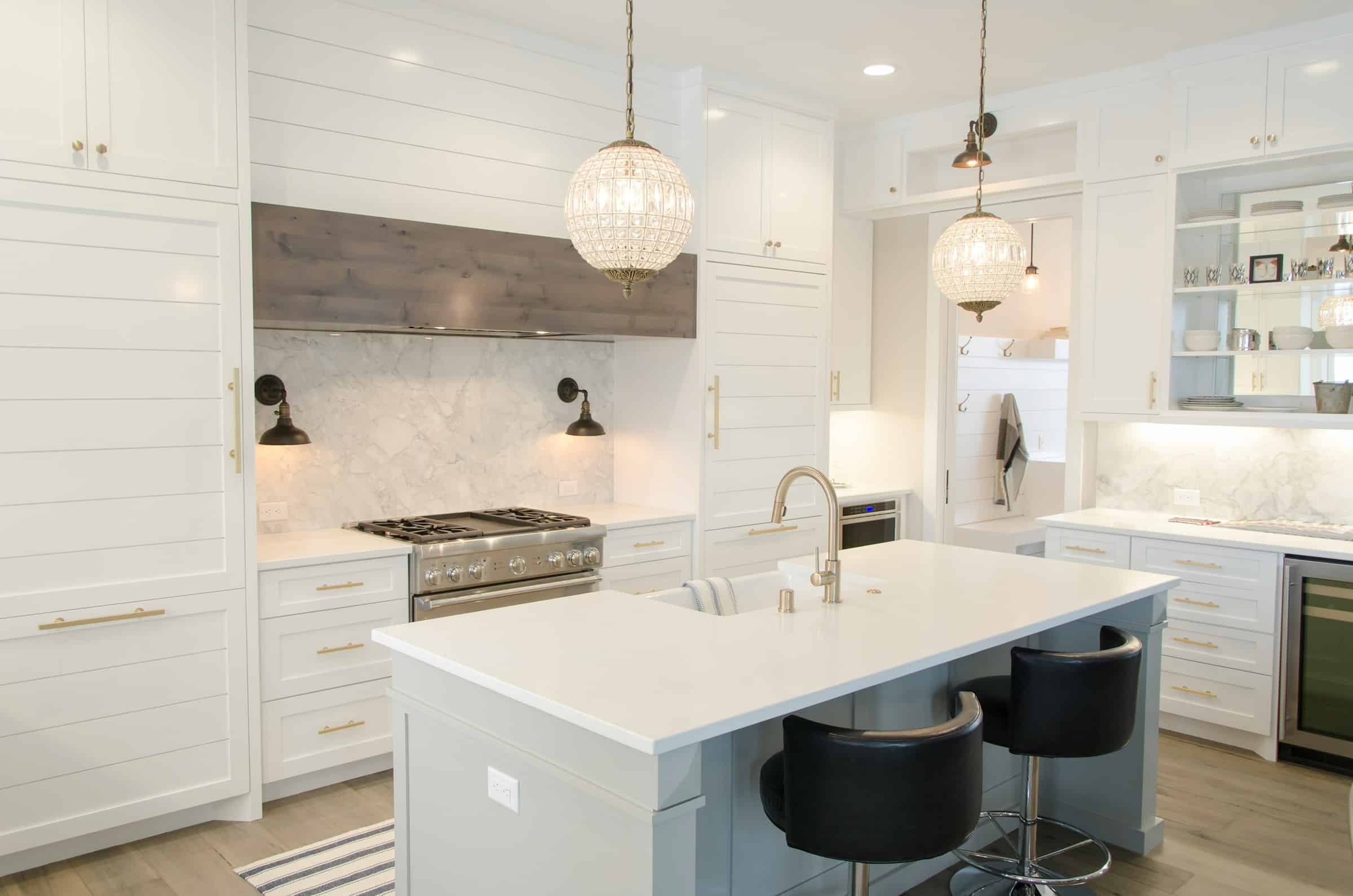How to Plan a Kitchen Garden that Complements Your Home’s Aesthetic Style?

The idea of having a kitchen garden is not new, it’s an age-old concept that has been gaining momentum in recent times. A kitchen garden, brimming with vibrant vegetables and herbs, can add visual appeal to your outdoor space, and also serve as a constant source of fresh, organic produce for your kitchen. But how can you incorporate this functional space into your home landscape without compromising on the aesthetic style of your home? Let’s delve into some ideas and design concepts that will help you cultivate a kitchen garden that complements the overall look of your home.
Defining Your Kitchen Garden Style
Before you start turning soil and planting seeds in your yard, it’s vital that you first define the style of your garden. This decision should, ideally, be in harmony with the existing design and aesthetic style of your home.
Sujet a lire : How to Design a Home Office that Doubles as a Hobby Room for Painting and Drawing?
For instance, if you live in a modern home with a minimalist design, your kitchen garden could feature a geometric layout with clean lines and a monochromatic color scheme. On the other hand, if your home has a more traditional or rustic style, you may consider designing a cottage-style kitchen garden with a variety of plants and flowers mixed in with the fruits and vegetables.
Image Credit: Consider consulting with a professional landscape designer who can guide you in choosing the right design elements and plant combinations that will suit your home’s style.
A lire également : What’s the Best Approach to a Clutter-Free Minimalist Living Room with Kids?
Choosing and Arranging Your Plants
After defining the style of your garden, the next step is to select the plants that you want to grow. This is a critical step as the choice and arrangement of plants can significantly impact the overall look of your garden.
While most vegetables are not known for their aesthetic appeal, there are a number of vegetable and herb varieties that are both edible and visually striking. For example, rainbow chard, purple kale, and golden cherry tomatoes can add a pop of color to your garden, while herbs like rosemary, thyme, and sage provide greenery and fragrance.
When arranging your plants, keep in mind the principles of landscape design. Create visual interest by varying the height, color, and texture of the plants. Make sure to place the taller plants at the back or in the middle of your garden, with the shorter plants in the front. This will ensure that every plant gets its fair share of sunlight.
Incorporating Garden Art and Accessories
Sprucing up your kitchen garden doesn’t stop at selecting and arranging your vegetables and herbs. There are numerous ways to enhance the visual appeal of your garden through the use of garden art and accessories.
From trellises and arches to bird baths and sculptures, these elements serve a dual purpose – they not only enhance the garden’s aesthetic appeal, but can also provide functional benefits. For instance, a trellis or an arch can provide support to climbing plants like beans and peas, while a bird bath can attract beneficial birds that will help keep pests at bay.
As with your plant selections, make sure that your garden accessories are in line with the overall style of your home. For instance, if your home has a modern aesthetic, consider using sleek, geometric garden accessories. If your home has a rustic style, opt for accessories made of natural materials like wood or stone.
Integrating the Garden into Your Overall Landscape
Finally, you want to ensure that your kitchen garden is seamlessly integrated into your overall landscape. This can be achieved through careful planning and design.
Consider the position of your garden in relation to your home. The garden should ideally be located in an area that is easily visible and accessible from your kitchen. This will not only make it convenient for you to harvest your produce, but also allow you to enjoy the view of your garden from your home.
Another important aspect to consider is the transition between your kitchen garden and the rest of your landscape. This can be achieved through the use of pathways, hedges, or a change in elevation. These elements can help delineate your garden space while still ensuring a seamless flow within your landscape.
Watering and Maintenance
A well-maintained garden is a beautiful garden. It’s important to ensure that your plants receive the right amount of water. Overwatering or underwatering can harm your plants and disturb the overall aesthetic of your garden. It would be beneficial to install an efficient watering system like a drip irrigation or sprinkler system.
Regular weeding is also crucial. Weeds can quickly overrun your garden, detracting from its beauty and competing with your vegetables for resources. Investing in quality gardening tools and dedicating time each week to weeding can keep your kitchen garden looking its best.
With careful planning and thoughtful design, a kitchen garden can be more than just a source of fresh vegetables – it can be a striking addition to your home’s landscape. By considering your home’s style and incorporating complementary design elements, you can create a kitchen garden that is both functional and aesthetically pleasing.
Using Eco-Friendly Practices in Your Kitchen Garden
Building a kitchen garden that complements your home’s aesthetic doesn’t stop at the design stage. The methods you use to cultivate your vegetables and herbs play a significant role in enhancing the overall appeal of your outdoor space. Eco-friendly gardening practices not only contribute to the health and sustainability of your garden but also add an extra layer of aesthetic appeal to your home.
An integral part of eco-friendly gardening is composting. Kitchen scraps, yard waste, and even shredded paper can be composted to create nutrient-rich soil for your garden. Not only does this reduce waste, it also eliminates the need for chemical fertilizers, keeping your vegetable garden organic and safe for consumption.
Another eco-friendly practice to consider is the use of natural pest controls. Instead of using harmful pesticides, you can control pests in your kitchen garden by encouraging the presence of beneficial insects. For instance, ladybugs and spiders are natural predators of many garden pests. You can attract these helpful creatures to your garden by planting certain flowers and herbs.
Water conservation is also a significant element of eco-friendly gardening. Implementing a rainwater harvesting system is an excellent way to conserve water. You can collect rainwater in barrels and use it to irrigate your garden. This practice is not only eco-friendly but can also create a unique visual element in your garden design.
Conclusion: Embrace the Beauty of Your Kitchen Garden
Building a kitchen garden that complements your home’s aesthetic style is a rewarding venture. It allows you to cultivate your own organic vegetables and herbs, enriches your outdoor space, and adds to the overall appeal of your home. However, planning and designing a kitchen garden require careful thought and consideration to ensure it blends perfectly with your home’s aesthetic.
Remember, your garden should reflect the overall style of your home. Whether you live in a modern home with sleek design elements or a traditional home with rustic charm, every aspect of your garden – from the layout to the choice of vegetables and herbs, and even the garden art and accessories – should echo that style.
Incorporating eco-friendly practices into your garden not only promotes sustainability but also enhances the overall aesthetic appeal of your space. Whether it’s composting kitchen scraps, encouraging beneficial insects, or implementing a rainwater harvesting system, these practices add an additional dimension of charm to your garden.
In the end, a kitchen garden is more than just a source of fresh produce. It’s a vibrant, living extension of your home, a place of beauty and tranquility, and a testament to your love for nature and sustainable living. So, let your creativity shine, and plan a kitchen garden that serves as a visual delight and a culinary haven.
